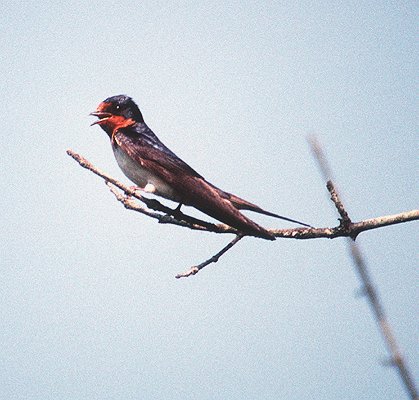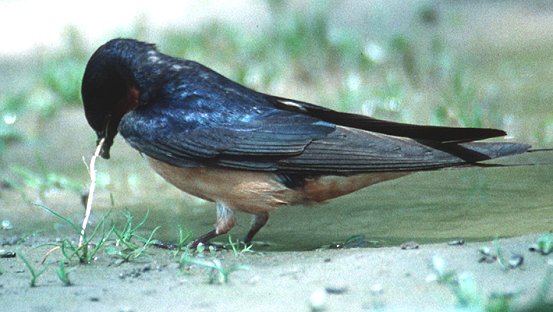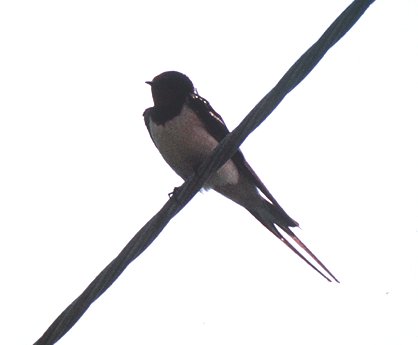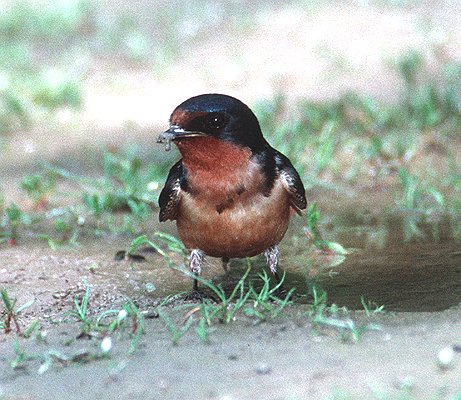|
Barn Swallow Hirundo rustica Golondrina de Horquilla,
|
 |
|
Photo: G. Beaton
|
|
IDENTIFICATION: Deep, iridescent blue above, with a rust-colored throat. The undersides vary from pale gray to cinnamon-colored, depending on subspecies, feather wear and the birdís age. The long, deeply-forked tail is a prominent feature in flight. Length: 17-20 cm.; weight: 17-21 g. VOICE: A high-pitched, grinding or squeaky note, often given in flight. Audio 3 (M. Oberle). HABITAT: Wetlands, fields, and coastal areas, often over water. HABITS: Forages for insects in small flocks, often with Cave Swallows. Swallows will bathe on the wing, dipping quickly to the surface of a pond and then shaking off the water as they rise. The Barn Swallow is often seen perched on a wire or sometimes even on the ground. In the breeding season in North America, females favor those males that have the longest tails and most symmetrical tail feathers. However, some scientists feel that natural selection for maneuvering in flight may have been a more important factor in the original evolution of swallows' tail streamers. On the breeding grounds in North America pairs build a mud nest---either alone or in small colonies---on buildings, ledges, caves, bridges, or culverts. Young birds from previous broods may help feed the chicks. Each clutch has 4-6 white eggs, spotted with brown. Both sexes incubate the eggs for 14-16 days, and the chicks fledge 18-23 days after hatching. STATUS AND CONSERVATION: This is a common migrant visitor and uncommon winter resident in Puerto Rico. RANGE: Breeds across the temperate zone of the Northern Hemisphere and in northern Africa. In the New World it breeds from southern Alaska and the Yukon Territory to central Mexico. Has recently expanded its breeding range in southeastern North America to Florida. Winters from Panamá and occasionally the West Indies, south to southern Argentina and Chile. Can be seen over El Morro in Old San Juan during migration. TAXONOMY: PASSERIFORMES; HIRUNDINIDAE; Hirundininae |
|
 |
|
|
Photo: G. Beaton
|

